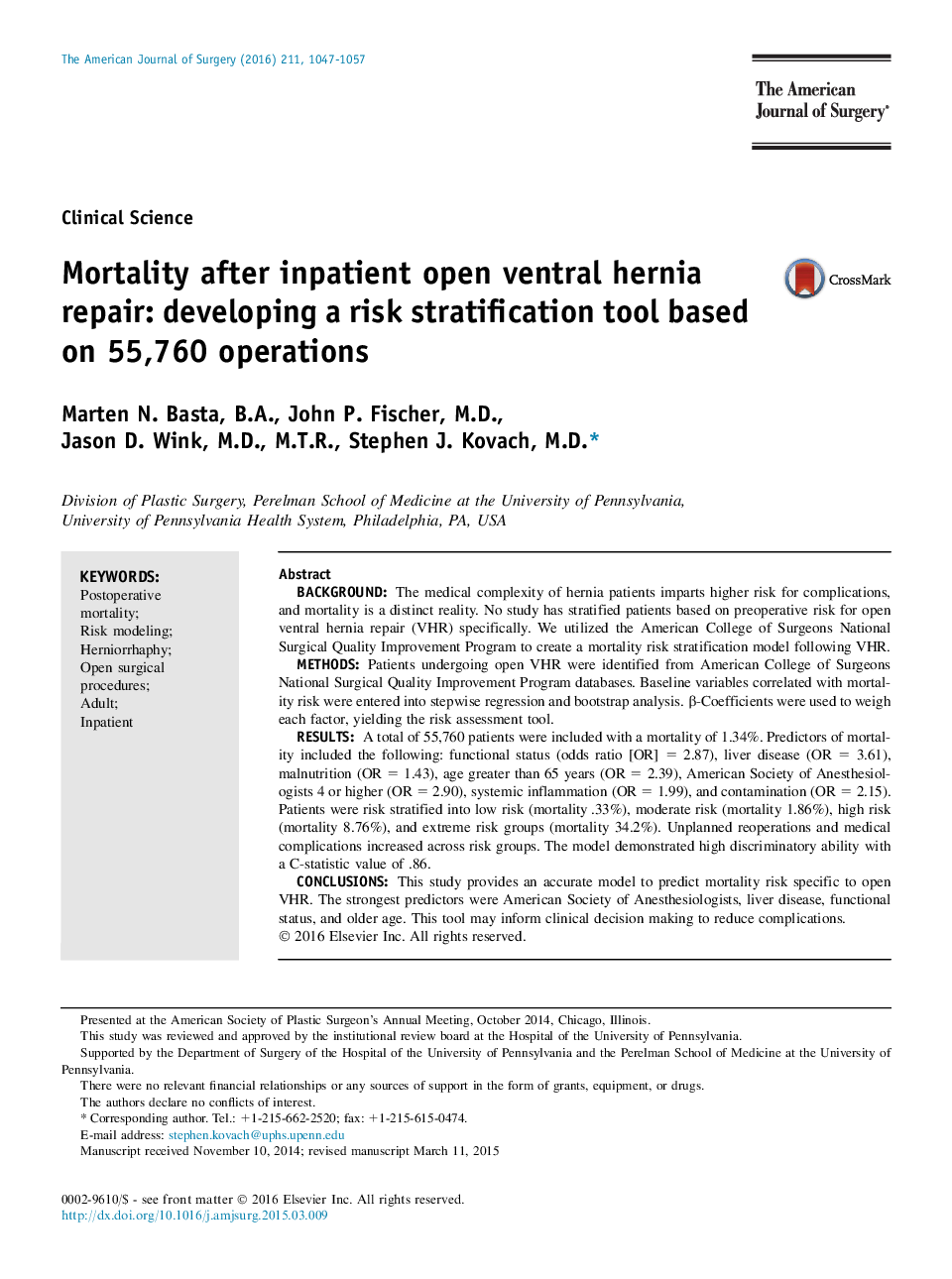| Article ID | Journal | Published Year | Pages | File Type |
|---|---|---|---|---|
| 4278189 | The American Journal of Surgery | 2016 | 11 Pages |
BackgroundThe medical complexity of hernia patients imparts higher risk for complications, and mortality is a distinct reality. No study has stratified patients based on preoperative risk for open ventral hernia repair (VHR) specifically. We utilized the American College of Surgeons National Surgical Quality Improvement Program to create a mortality risk stratification model following VHR.MethodsPatients undergoing open VHR were identified from American College of Surgeons National Surgical Quality Improvement Program databases. Baseline variables correlated with mortality risk were entered into stepwise regression and bootstrap analysis. β-Coefficients were used to weigh each factor, yielding the risk assessment tool.ResultsA total of 55,760 patients were included with a mortality of 1.34%. Predictors of mortality included the following: functional status (odds ratio [OR] = 2.87), liver disease (OR = 3.61), malnutrition (OR = 1.43), age greater than 65 years (OR = 2.39), American Society of Anesthesiologists 4 or higher (OR = 2.90), systemic inflammation (OR = 1.99), and contamination (OR = 2.15). Patients were risk stratified into low risk (mortality .33%), moderate risk (mortality 1.86%), high risk (mortality 8.76%), and extreme risk groups (mortality 34.2%). Unplanned reoperations and medical complications increased across risk groups. The model demonstrated high discriminatory ability with a C-statistic value of .86.ConclusionsThis study provides an accurate model to predict mortality risk specific to open VHR. The strongest predictors were American Society of Anesthesiologists, liver disease, functional status, and older age. This tool may inform clinical decision making to reduce complications.
